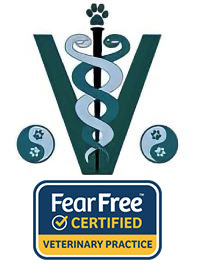Library
-
Taurine is given by mouth in the form of a capsule, tablet, powder, or liquid and is used as an over the counter nutritional supplement to treat taurine deficiency, dilated cardiomyopathy, and prevent retinal degeneration. Give as directed by your veterinarian. Side effects are rare but may include vomiting. There are no known contraindications to using this supplement. If a negative reaction occurs, please call your veterinary office.
-
Taurine is a type of amino acid. Amino acids are the building blocks of all proteins. Taurine is an essential amino acid for cats. Taurine deficiency leads to feline taurine retinopathy, a weakening of the muscle cells in the heart (dilated cardiomyopathy) and may cause digestive disturbances. Since the 1980s, all cat diets are supplemented with enough taurine to meet the normal cat's needs. A healthy cat that eats a high-quality cat food that is appropriate to its life stage does not require supplementation. Supplemental taurine is used as a treatment for dilated cardiomyopathy in cats.
-
Deafness does not affect a cat's learning abilities, but it does impact what kinds of cues they can learn. The keys to success are choosing a set of consistent signs and signals and learning what the cat finds rewarding. Deaf cats need special supervision such as leashing or a catio if allowed outdoors, and may startle more easily than cats that can hear, but otherwise can be trained with all the same methods used for a cat with normal hearing.
-
Deafness does not affect a dog's learning abilities, but it does impact what kinds of cues they can learn. Two keys to success are choosing a set of consistent signals and learning what the dog finds rewarding. Deaf dogs need special supervision such as leashing and safe fencing and may startle more easily than dogs that can hear, but otherwise can be trained with all the same methods used for a dog with normal hearing.
-
"Drop it" is an important life skill for dogs. Playing fetch can be more fun when your dog releases the toy for you to toss. A "drop it" cue can be a life-saver if your dog ever gets hold of something that could hurt him. "Drop it" can be easily trained using positive-reinforcement methods.
-
Nebulization and coupage are used in patients with a variety of lung conditions and can be performed by veterinary staff and pet owners. Nebulization may be used to deliver a variety of medications to the lungs, in cases of infection, allergic lung disease, or other lung conditions. Coupage is often recommended for patients with pneumonia or bronchitis.
-
Nebulization and coupage are used in patients with a variety of lung conditions and can be performed by veterinary staff and pet owners. Nebulization may be used to deliver a variety of medications to the lungs in cases of infection, allergic lung disease, or other lung conditions. Coupage is often recommended for patients with pneumonia or bronchitis.
-
Teething in puppies lasts from about 3 to 6 weeks of age and again from 12 to 24 weeks of age. Safe chew toys are an important source of energy release, but if puppies are not stimulated sufficiently, or supervised carefully, they will chew elsewhere. Occasionally, retained baby teeth or other dental abnormalities can occur that need to be addressed by your veterinarian. It is important to get your puppy used to having their mouth manipulated for exams and teeth brushing.
-
Polytetrafluoroethylene (PTFE) is used as a non-stick coating on cookware. Teflon is the most well-known brand name of PTFE-based coatings. When PTFE is heated to high temperatures, it releases toxic particles and acidic gases that are toxic when inhaled. Birds are particularly sensitive to inhaled toxins or poisons and can be poisoned by PTFE even if they are not in the same room. Sadly, sudden death may be the only sign of PTFE poisoning.
-
Telehealth is a broad term that refers to the use of telecommunications to provide health-related services. Telehealth services can be delivered by a variety of methods including telephone, text messaging, internet chat, and videoconferencing. Teletriage is the act of performing triage remotely, via telephone or internet and helps determine the urgency of your pet’s medical concern. Telemedicine refers to the practice of medicine at a distance. In the context of veterinary medicine, telemedicine refers to a veterinarian formulating a diagnosis and treatment plan for your pet without an in-person examination. Telemedicine is typically only permitted within the context of an existing Veterinarian-Client-Patient Relationship. Given the current COVID-19 pandemic and social/physical distancing requirements however, some federal and local governments have relaxed the requirements surrounding telemedicine.


